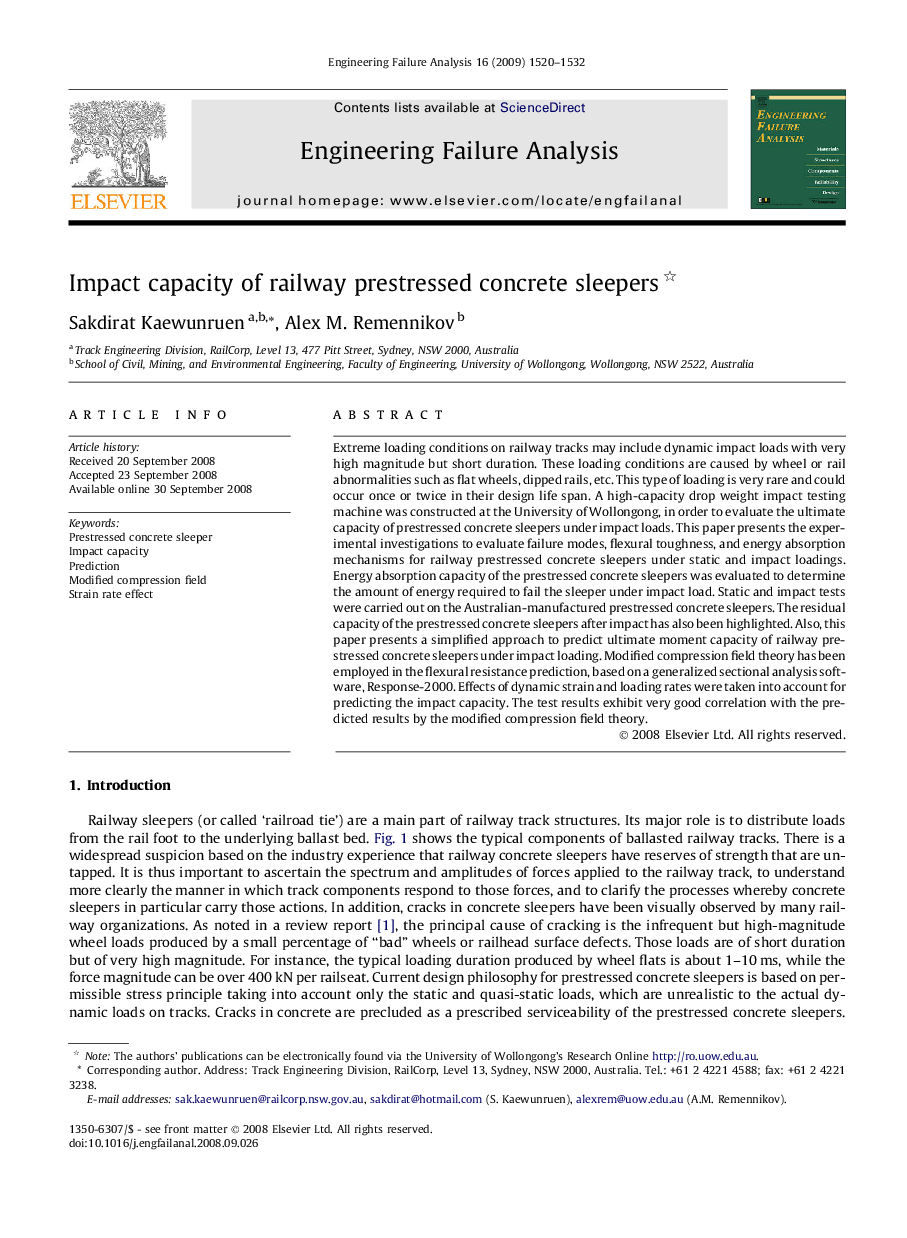| کد مقاله | کد نشریه | سال انتشار | مقاله انگلیسی | نسخه تمام متن |
|---|---|---|---|---|
| 763877 | 896953 | 2009 | 13 صفحه PDF | دانلود رایگان |
عنوان انگلیسی مقاله ISI
Impact capacity of railway prestressed concrete sleepers
دانلود مقاله + سفارش ترجمه
دانلود مقاله ISI انگلیسی
رایگان برای ایرانیان
کلمات کلیدی
موضوعات مرتبط
مهندسی و علوم پایه
سایر رشته های مهندسی
مهندسی صنعتی و تولید
پیش نمایش صفحه اول مقاله

چکیده انگلیسی
Extreme loading conditions on railway tracks may include dynamic impact loads with very high magnitude but short duration. These loading conditions are caused by wheel or rail abnormalities such as flat wheels, dipped rails, etc. This type of loading is very rare and could occur once or twice in their design life span. A high-capacity drop weight impact testing machine was constructed at the University of Wollongong, in order to evaluate the ultimate capacity of prestressed concrete sleepers under impact loads. This paper presents the experimental investigations to evaluate failure modes, flexural toughness, and energy absorption mechanisms for railway prestressed concrete sleepers under static and impact loadings. Energy absorption capacity of the prestressed concrete sleepers was evaluated to determine the amount of energy required to fail the sleeper under impact load. Static and impact tests were carried out on the Australian-manufactured prestressed concrete sleepers. The residual capacity of the prestressed concrete sleepers after impact has also been highlighted. Also, this paper presents a simplified approach to predict ultimate moment capacity of railway prestressed concrete sleepers under impact loading. Modified compression field theory has been employed in the flexural resistance prediction, based on a generalized sectional analysis software, Response-2000. Effects of dynamic strain and loading rates were taken into account for predicting the impact capacity. The test results exhibit very good correlation with the predicted results by the modified compression field theory.
ناشر
Database: Elsevier - ScienceDirect (ساینس دایرکت)
Journal: Engineering Failure Analysis - Volume 16, Issue 5, July 2009, Pages 1520-1532
Journal: Engineering Failure Analysis - Volume 16, Issue 5, July 2009, Pages 1520-1532
نویسندگان
Sakdirat Kaewunruen, Alex M. Remennikov,